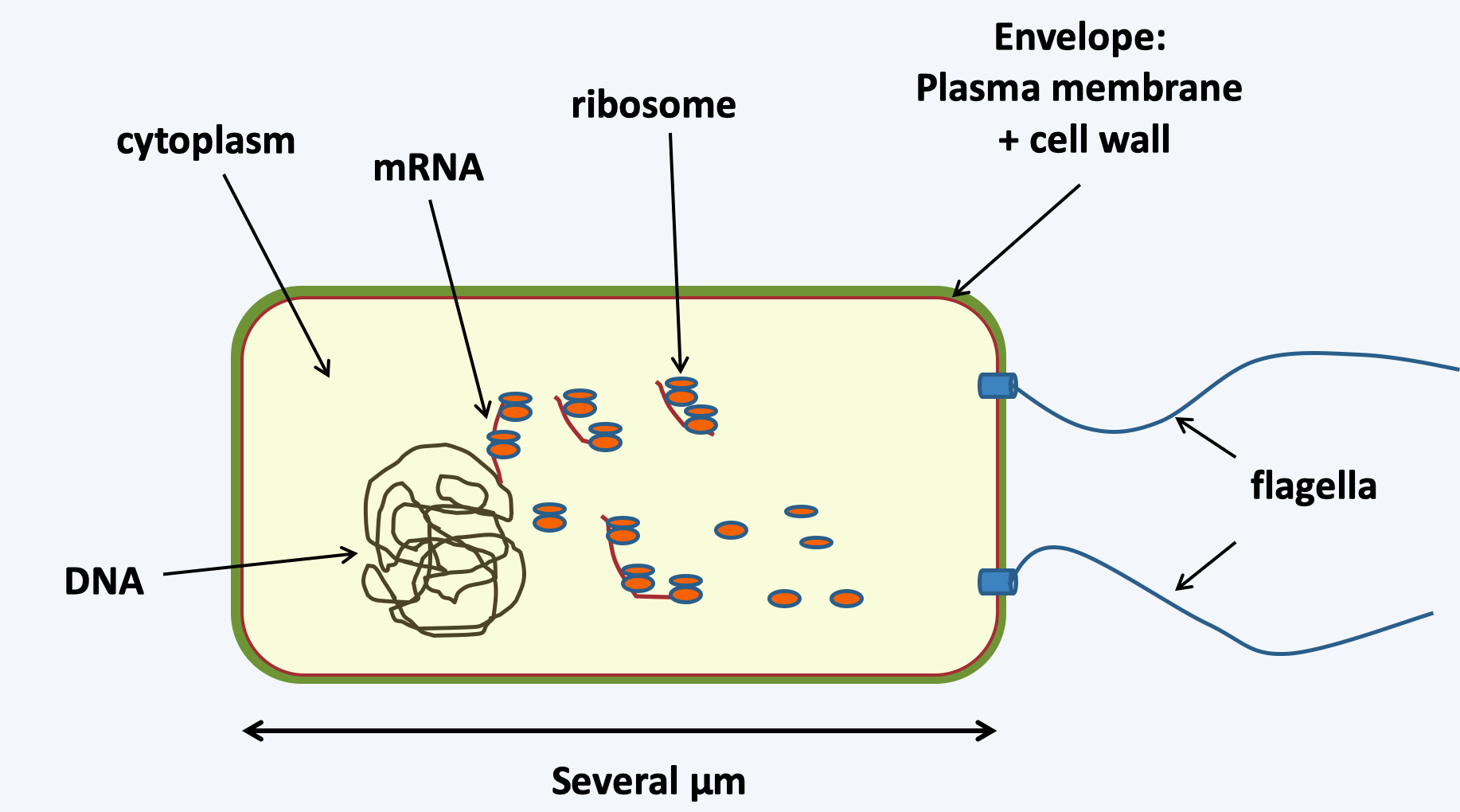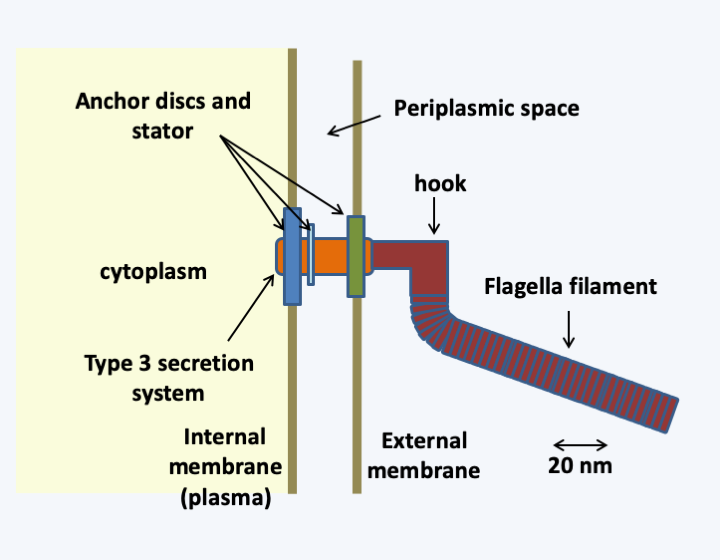The prokaryotic cell
Back to main indexWhat characterizes typical prokaryotic cells (Figure 1), besides their small size and simple structure, is the absence of a network of internal membranes and a true complex cytoskeleton. The cell appears as a cytoplasm delimited by one or two membranes, most often reinforced by a wall, and where flagella and pili can be anchored. Bacterial flagella are made up of flagellin and are not surrounded by the plasma membrane (Figure 2) because they result from the polymerization outside the cell of flagellin monomers. Their structure is therefore very different from eukaryotic flagella and are therefore not homologous to them but analogous to them. In the cytoplasm, we note the presence of numerous ribosomes and of a lighter mass, the nucleoid which contains the DNA. Take note, the nucleoid is not a nucleus because it is not delimited by a membrane. This organization has several consequences. First, energy production is not compartmentalized, it occurs at the level of the plasma membrane. Nucleotide triphosphates are therefore directly available to be used. The same is true for many enzymatic reactions. A prokaryotic cell is therefore optimized for immediate nutrient use and often has little nutritional reserves. Second, since the genetic material is not surrounded by a nuclear membrane, there is coupling between transcription and translation, which eliminates a potential step of regulating the expression of genetic information.

Figure 1.
The typical prokaryotic cell. Prokaryotic cells have a simple structure and typically do not contain membrane-bound organelles.However, contrary to information in many textbooks, genetic material can take on a complex structure:
- presence of several chromosomes, circular and/or linear with, for example, two circular chromosomes in Vibrio and one circular chromosome and one linear chromosome in certain Agrobacterium species. However, in the majority of cases, the genome is in the form of a single circular chromosome.
- presence of proteins similar in function to that of histones, which combine with DNA to form a structure that resembles chromatin. However, the structure of bacterial chromosomes is in no way comparable in complexity to the chromosomes of eukaryotes. In particular, cell division has simple modalities by binary fission. Note that the size of prokaryotic genomes varies from 600 kb to 10 Mb. Genomes are compact with few introns or repeated sequences. Genes are grouped into operons.
- A probably fundamental functional difference between prokaryotes and eukaryotes is the absence of endocytosis processes. This implies that only soluble molecules of small sizes enter the interior of the cell via transporters (active or not). This characteristic is to be compared with the absence of sterols in the membranes of most of these organisms. Sterols in fact fluidize the membrane, allowing its deformation during exo- and endocytosis.

Figure 2.
The bacterial flagellum. The flagellum is a hollow tube formed by the polymerization of flagellin monomers. It is anchored in the internal plasma membrane by a complex system of discs. The stator allows the rotation of the flagellum via the proton-motor force. The synthesis of the flagellum requires the expression of several dozen genes. Monomers are expelled from the cell via the Type 3 secretion system and are assembled at the end of the filament.Back to chapter index